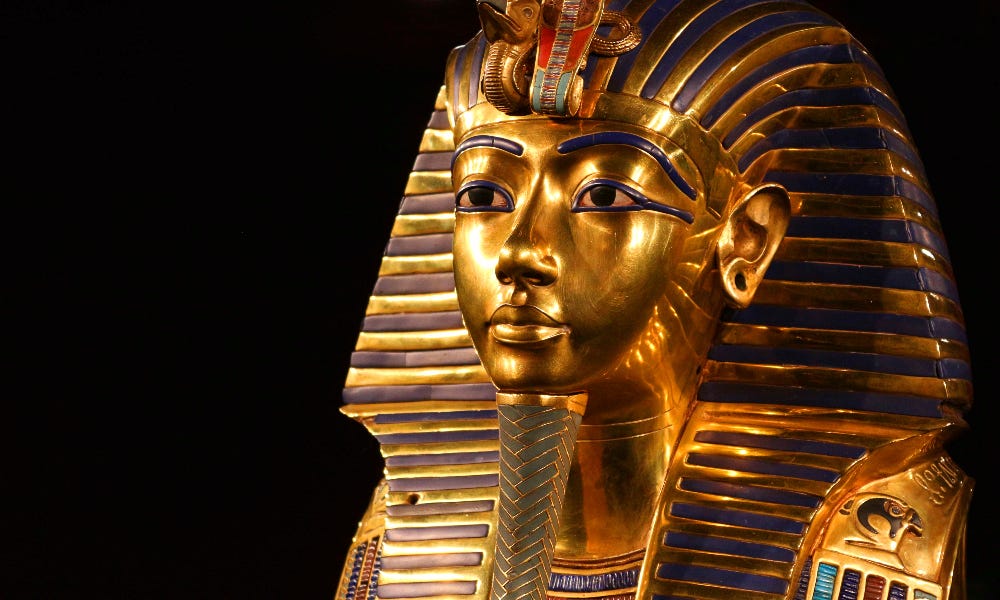Why King Tut Was Mummified With an Erection: Ancient Egypt’s Most Bizarre Burial Mystery
Explore the strange tale of King Tutankhamun’s post-mortem erection—what it reveals about ancient beliefs, Osirian rituals, and the young Pharaoh’s quest for immortality.
If you thought King Tutankhamun was just another footnote in your middle school history class, think again. The boy-king might’ve died young, but he left behind one of the most iconic tombs ever discovered—chock-full of gold, artifacts, and, famously, a certain unique mortuary detail that has kept historians abuzz for decades. Yes, we’re talking about the rumor that King Tut was buried with an erection. But is that real? And if so, why?
Get ready for a tantalizing peek into the murky underworld of ancient Egyptian rituals, cosmic myths, and a good old-fashioned moral panic over one of the most extraordinary embalming quirks in recorded history.
The Boy-King in All His Glory
First things first, let’s recall who we’re dealing with. Tutankhamun—famously known as King Tut—ruled Egypt during the 18th Dynasty (c. 1332–1323 BCE). He ascended to the throne as a child and died under somewhat mysterious circumstances at around 19 years old. Since Howard Carter’s discovery of his nearly intact tomb in 1922, King Tut has become an international icon, the poster child of Ancient Egypt’s golden age.
But What About That “Erection”?
When researchers finally examined Tut’s mummified remains, some noted that his penis seemed to be—well—somewhat elevated. Whether it’s a true erection or simply an embalming effect has fueled heated debates among Egyptologists. And in the swirl of media headlines, the phenomenon has loomed large in popular imagination.
Myth, Magic, and the Osiris Connection
To understand why the Egyptians might preserve a pharaoh with a “perpetual stand,” it helps to know a bit about their religion—particularly their worship of Osiris, the god of fertility, resurrection, and the afterlife.
Osiris’s Post-Mortem Revival: In Egyptian mythology, Osiris is killed and then pieced back together and resurrected by his wife-sister, Isis. This resurrection is central to the Egyptian concept of rebirth and life after death.
Sexual Symbolism: Osiris represents fertility and regeneration—so his iconography often leans into phallic symbols, emphasizing the regenerative power of male potency.
Aligning Tut With Osiris: Some scholars theorize that Tut was deliberately positioned to embody Osiris in the afterlife, potentially explaining why his mummy might appear ready to, ahem, “procreate” eternally.
The Controversies (and Conspiracies)
While some researchers see a solid theological explanation—Tut’s embalming was meant to parallel the Osirian myths—others aren’t fully convinced. Here’s where the speculation gets juicy:
Embalming “Mishaps”?
Possibly, the angle of his pelvis or the effect of dehydration on soft tissues gave the impression of an erection. Mummification could shrink and stiffen certain body parts, making them appear more prominent than expected.Political & Religious Statement
Another theory argues that King Tut’s post-mortem enhancement was part of a broader ideological push to restore older religious practices. His father (or stepfather), Akhenaten, had shaken things up by championing the worship of the sun disk Aten. So maybe pro-Osiris priests staged this bold image of Tut to reinforce the revival of the more traditional pantheon.Ancient “He’s All Man!” Propaganda
Let’s face it: Egyptians loved symbolism. Perhaps this was a subtle “macho” marketing campaign for the deceased king, highlighting his regal potency even in death. (Today’s tabloids would be proud.)
Lost and Found: Where Did It Go?
In a twist worthy of a Hollywood script, the famous erect penis apparently “went missing” for a time. Early analyses noted it, but later examinations found it had detached. Conspiracy theories flew faster than a sandstorm—was it tomb robbers? Did someone “borrow” it for a private collection? More likely, it was just displaced by the fragile condition of the mummy. But it sure kept the press busy.
The Many Afterlives of Tut
Regardless of whether King Tut’s mummy was actually sporting a bonafide erection or if it was just an odd angle of shrink-wrapped anatomy, there’s no doubt this detail keeps him in the spotlight. After all, we’re talking about a boy-king whose tomb was famously sealed for over 3,000 years—only to be opened and quibbled over by modern science and tabloid gossip alike.
What It Says About Egyptian Culture
Sex and Death: The Egyptians didn’t see sexuality and mortality as separate worlds. Fertility, regeneration, and the afterlife were intimately connected.
God-King Fusion: Pharaohs were considered divine, meant to merge with gods like Osiris upon death. If that meant ensuring their phallus was front and center, so be it.
What It Says About Us
Enduring Fascination: We moderns remain spellbound by anything even slightly salacious from the ancient world. A mummified erection? Sign us up for that Netflix doc, please!
Interpretation vs. Sensation: Even amid sensational claims, there’s usually some cultural nuance to be gleaned if we look beyond the scandalous headlines.
From Erect to Eternal
In the end, whether King Tut was truly laid to rest with an erection or if it was a case of embalming oddities, one thing’s clear: it fed into the enduring mystique of the boy-king. Ancient Egyptians believed fervently in the renewal of life after death—sperm, fertility, and cosmic potency included. By aligning Tut so intimately with Osiris, they might’ve guaranteed him the best seat on the cosmic roller-coaster of immortality.
So next time you find yourself marveling at golden statues or reading about Egyptian tomb cures, remember that sex, power, and rebirth were all part of the same sacred script. And in that dramatic story of gods and kings, a well-placed phallus could mean the difference between fading into obscurity or rising—quite literally—to the status of mythic legend.







